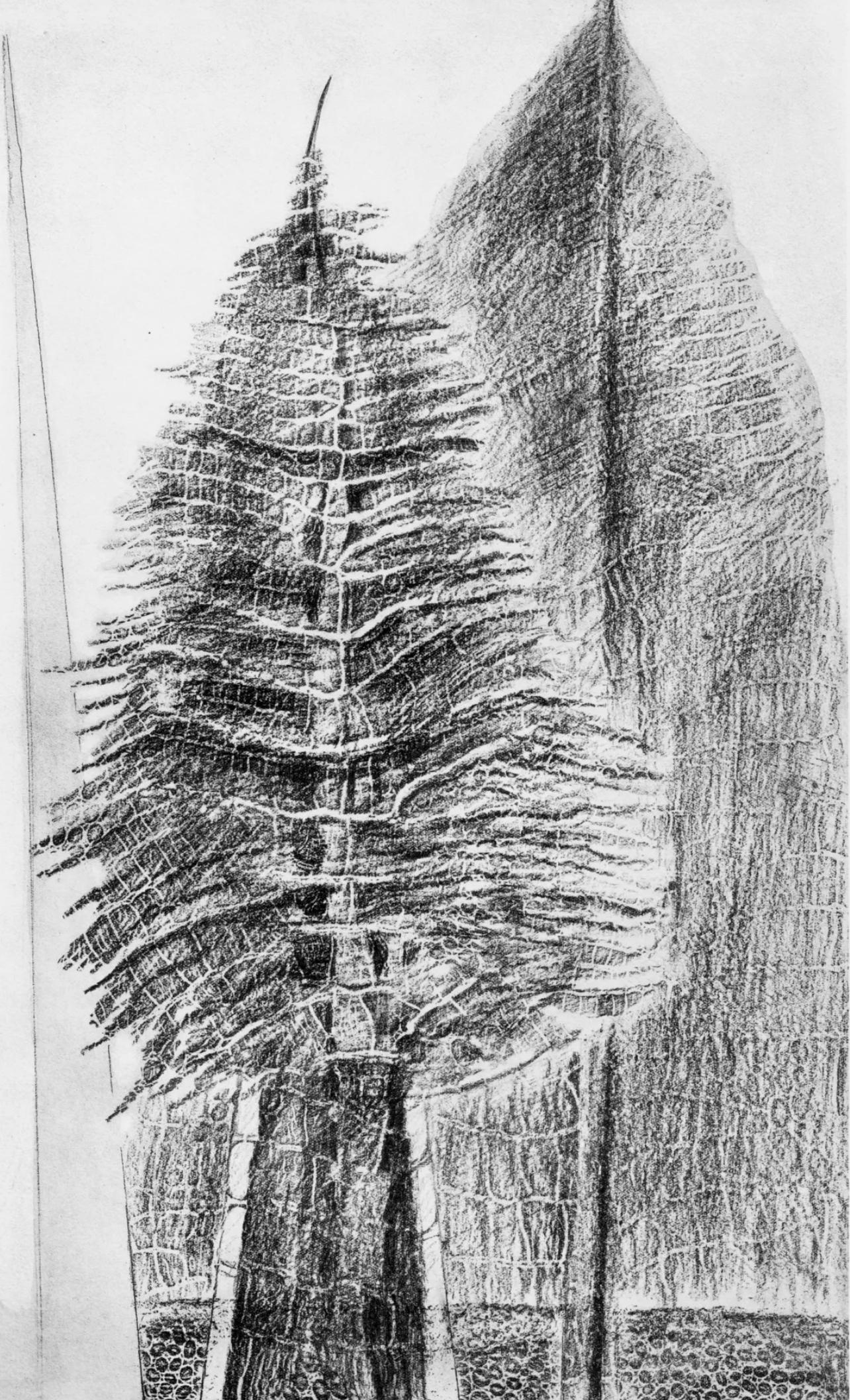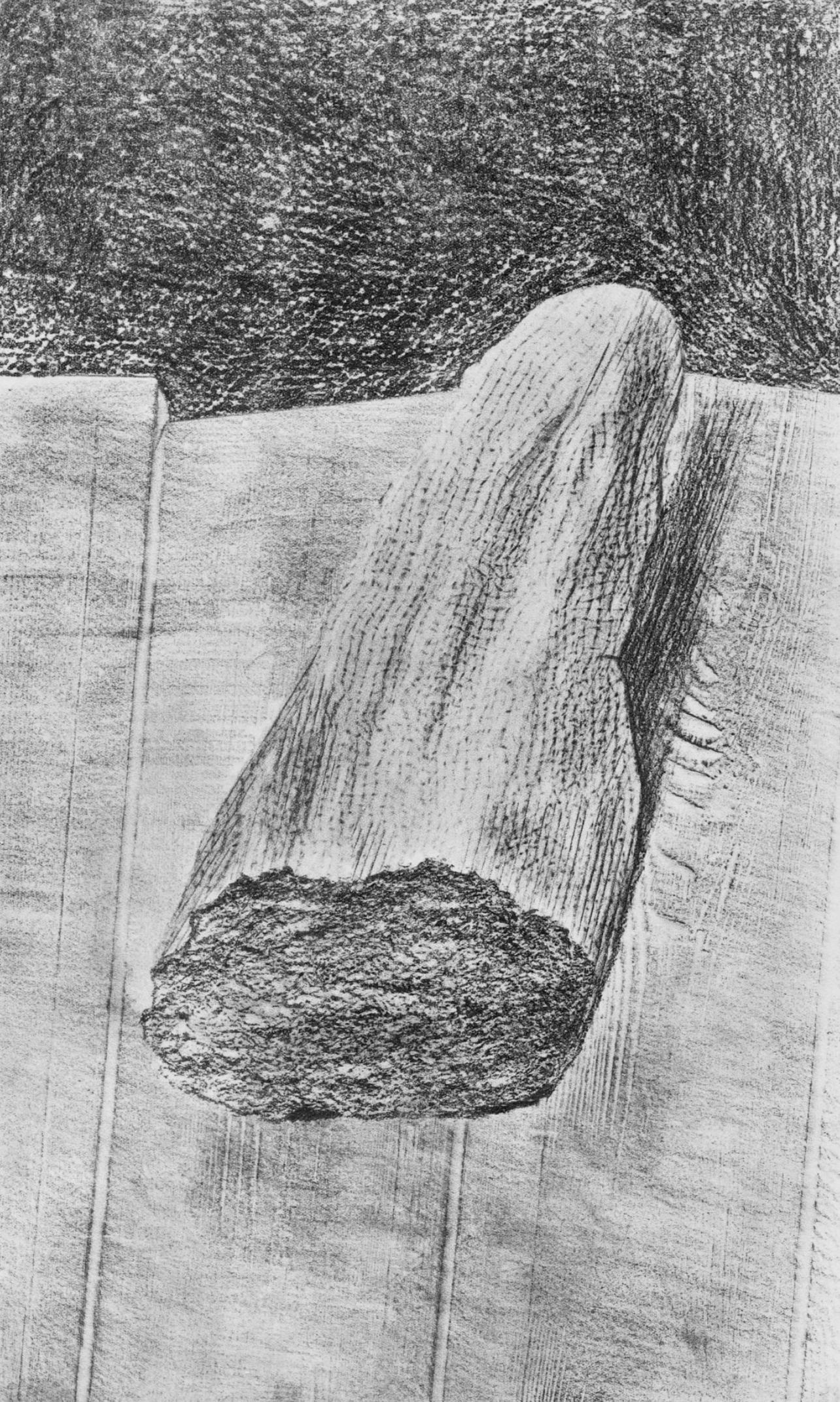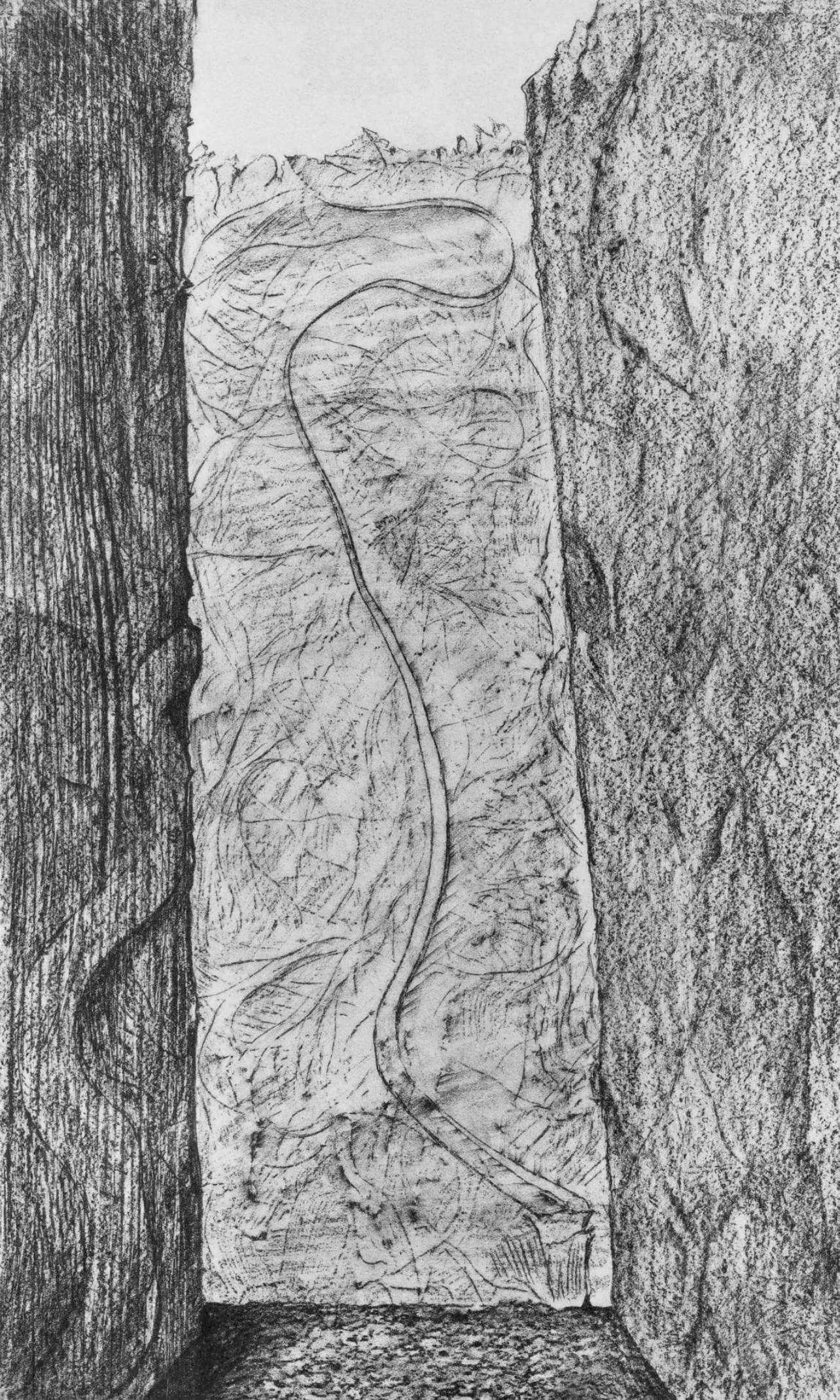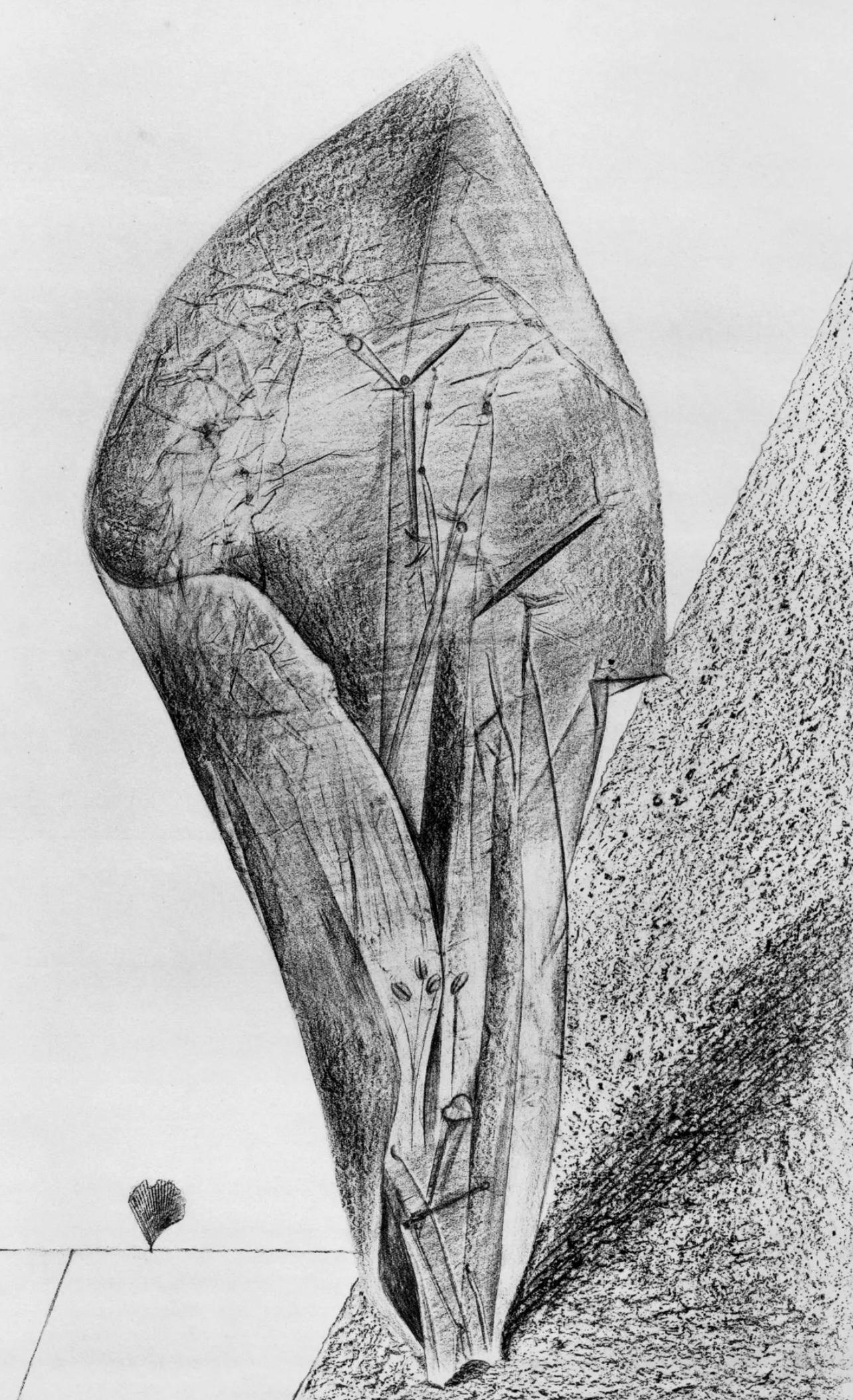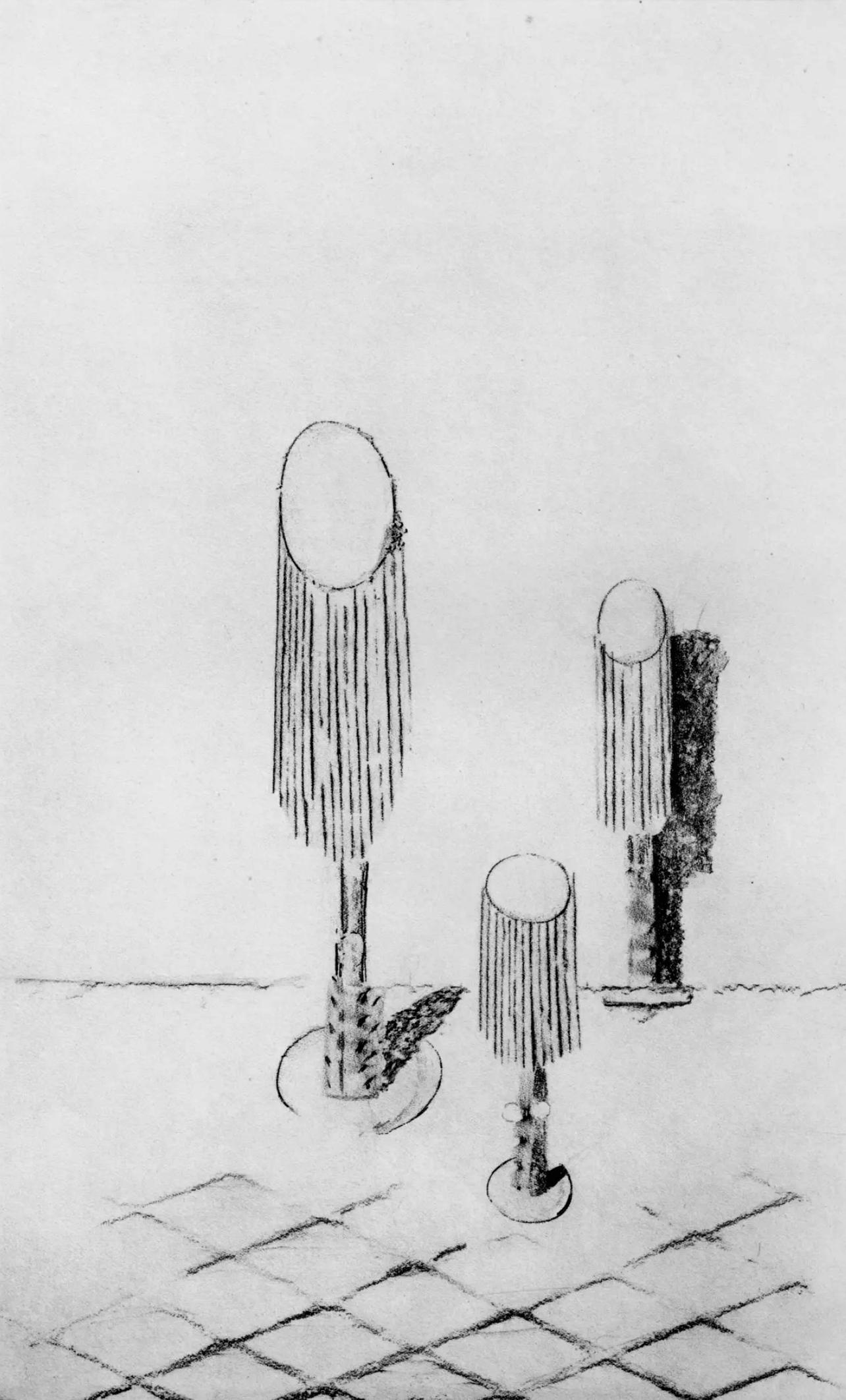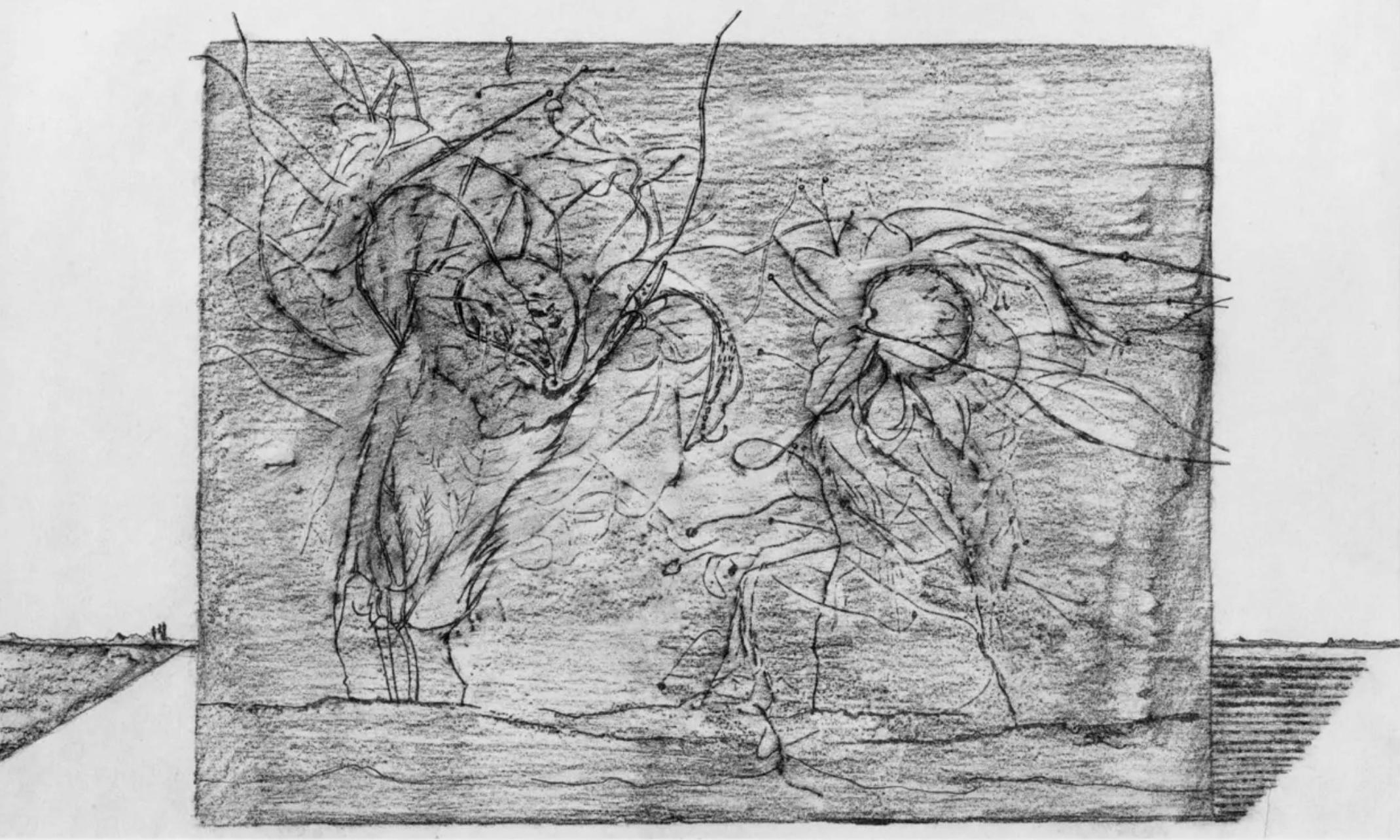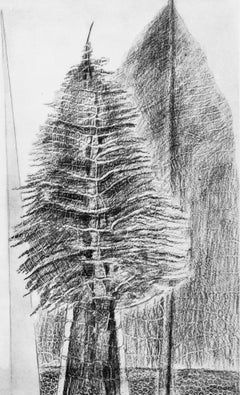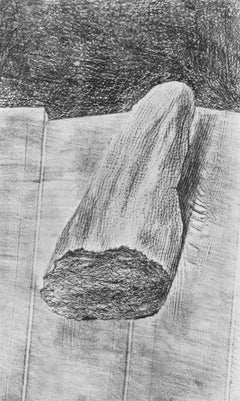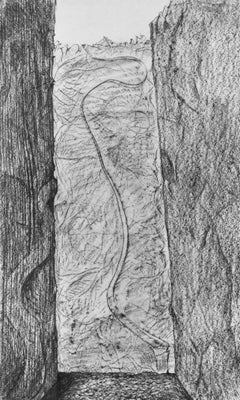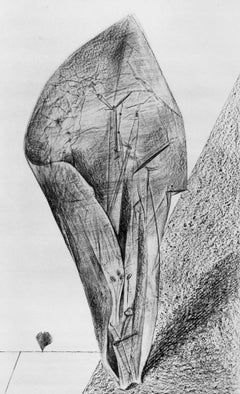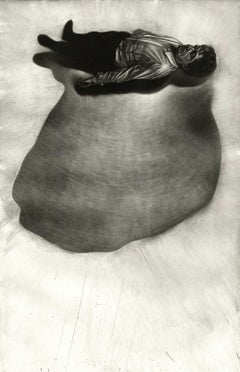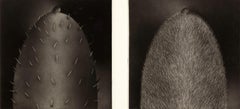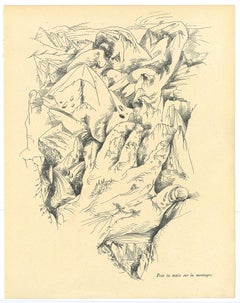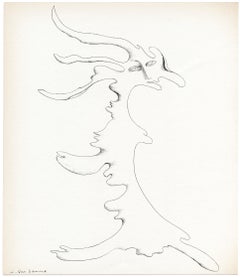Items Similar to Max Ernst, Eve, the Only One Left to Us, from Natural History, 1972 (after)
Want more images or videos?
Request additional images or videos from the seller
1 of 9
Max Ernst, Eve, the Only One Left to Us, from Natural History, 1972 (after)1972
1972
$716
$89520% Off
£554.84
£693.5420% Off
€629.63
€787.0320% Off
CA$1,026.21
CA$1,282.7720% Off
A$1,126.98
A$1,408.7320% Off
CHF 580.13
CHF 725.1620% Off
MX$13,484.69
MX$16,855.8620% Off
NOK 7,386.31
NOK 9,232.8920% Off
SEK 6,922.07
SEK 8,652.5920% Off
DKK 4,702.30
DKK 5,877.8820% Off
About the Item
This exquisite collotype after Max Ernst (1891–1976), titled Eve la seule qui nous reste (Eve, the Only One Left to Us), from the album Max Ernst, Histoire Naturelle (Natural History), originates from the 1972 edition published and printed by Verlag Gerd Hatje, Stuttgart. This remarkable work exemplifies Ernst’s revolutionary use of frottage—the technique of transferring textured surfaces to paper through rubbing—to evoke the mysterious interplay between chance, nature, and imagination. Its organic abstractions suggest the forces of creation, blurring the boundaries between the terrestrial and the cosmic in a poetic vision of nature’s hidden language.
Executed as a collotype from frottage on velin paper, this work measures 19.5 x 12.75 inches. Unsigned and unnumbered as issued. The edition demonstrates the superb craftsmanship of Verlag Gerd Hatje and the enduring influence of Ernst’s early Surrealist experiments in texture and automatism.
Artwork Details:
Artist: After Max Ernst (1891–1976)
Title: Eve la seule qui nous reste (Eve, the Only One Left to Us), from the album Max Ernst, Histoire Naturelle (Natural History)
Medium: Collotype from frottage on velin paper
Dimensions: 19.5 x 12.75 inches (49.53 x 32.39 cm)
Inscription: Unsigned and unnumbered as issued
Date: 1972
Publisher: Verlag Gerd Hatje, Stuttgart
Printer: Verlag Gerd Hatje, Stuttgart
Catalogue Raisonne: Spies, Werner, and Helmut Leppien. Max Ernst: Das Graphische Werk. Berne: Editions Kornfeld, 1975. No. 222.
Condition: Well preserved, consistent with age and medium
Provenance: From the album Max Ernst, Histoire Naturelle (Natural History), published and printed by Verlag Gerd Hatje, Stuttgart, 1972
Notes:
Excerpted from the album (translated from German), The first edition of the Histoire Naturelle appeared in 1926 by Editions Jeanne Bucher, Paris, in an edition of CCCVI examples. Hans Arp wrote the introduction. This new edition appeared in 1972. The German edition contains CCCL examples, of which CXI examples contain an original lithograph in three colors signed and numbered by the artist, which was printed by Pierre Chave in Vence, France. The preferred edition is numbered from I-CXI, the normal edition of CXII-CCCL. Some roman numbered examples also contain the original lithograph and are not intended for trade. For the new printing, the dimensions of the boards increased by one centimeter. Instead of the Roman numbering Arabic numbering was used. Verlag Gerd Hatje, Stuttgart.
About the Publication:
Max Ernst’s Histoire Naturelle (Natural History) stands among the most seminal illustrated works of Surrealism. First published in 1926 by Editions Jeanne Bucher, Paris, it marked a turning point in the artist’s exploration of chance-based processes. Comprising thirty-four collotypes created through frottage, the series reveals Ernst’s fascination with the hidden forms of nature and the unconscious. Each image evokes landscapes, flora, and organisms conjured from the textures of wood, fabric, and leaves—transforming accidental patterns into dreamlike compositions. The 1972 Stuttgart edition by Verlag Gerd Hatje faithfully reissued this landmark suite, under the supervision of Max Ernst. A milestone in Surrealist printmaking, Histoire Naturelle reflects Ernst’s belief that the artist’s role is to reveal the unseen—to uncover meaning from the spontaneous dialogue between matter and imagination.
About the Artist:
Max Ernst (1891–1976) was a German-French painter, sculptor, printmaker, and poet whose groundbreaking imagination and experimental techniques made him one of the most revolutionary figures of 20th-century art. A founding member of both Dada and Surrealism, Ernst dismantled traditional notions of art through chance, dream imagery, and psychological exploration, transforming painting, sculpture, and collage into instruments of the unconscious mind. Born in Bruhl, Germany, he studied philosophy and psychology at the University of Bonn before rejecting academic convention to pursue art, inspired by the Symbolists, Cubists, and the early abstractions of Pablo Picasso and Wassily Kandinsky. His traumatic experience serving in World War I left him disillusioned with logic and order, propelling him toward the Dada movement in Cologne in 1919, where he began creating his seminal collages that fused scientific diagrams and Victorian engravings into surreal dreamscapes. By 1922, Ernst had moved to Paris and joined a circle of avant-garde luminaries that included Picasso, Alexander Calder, Alberto Giacometti, Salvador Dali, Joan Miro, Marcel Duchamp, Man Ray, and Andre Breton, each of whom shared his fascination with the irrational and the unseen. Ernst’s invention of frottage (rubbing) and grattage (scraping) revolutionized modern painting, revealing textures and hidden images beneath the surface and allowing chance to become an active participant in creation. His visionary paintings—such as The Elephant Celebes (1921), Two Children Are Threatened by a Nightingale (1924), and Europe After the Rain II (1940–42)—blend myth, science, and dream into vast symbolic landscapes that remain among the defining masterpieces of Surrealism. A restless innovator, Ernst expanded into sculpture, crafting enigmatic totemic forms such as Capricorne (1948–1963) that bridged organic abstraction and surreal fantasy, echoing the fluid equilibrium of Calder’s mobiles and the conceptual wit of Duchamp. Fleeing Nazi-occupied France during World War II, Ernst emigrated to the United States with the support of Peggy Guggenheim, whom he later married, influencing the emerging Abstract Expressionists—among them Jackson Pollock, Robert Motherwell, and Willem de Kooning—through his fusion of automatism, texture, and mythic narrative. Returning to Europe after the war, he continued to refine his poetic, alchemical approach to painting, blending chaos and order into cosmic landscapes that inspired later artists such as Anselm Kiefer, Robert Rauschenberg, Cy Twombly, and Kiki Smith. His work, housed in major museums including MoMA, the Tate, and the Centre Pompidou, stands as a testament to his belief that art could bridge the conscious and unconscious, the rational and the fantastic. Standing alongside Pablo Picasso, Alexander Calder, Alberto Giacometti, Salvador Dali, Joan Miro, Wassily Kandinsky, Marcel Duchamp, and Man Ray, Max Ernst remains a cornerstone of modern art—an artist-philosopher whose limitless curiosity reshaped visual language and influenced generations of creators. His highest auction record was achieved by Le roi jouant avec la reine (The King Playing with the Queen) (1944), which sold for approximately 24.4 million USD at Christie’s, New York, in November 2022, reaffirming Max Ernst’s enduring legacy as one of the most visionary, provocative, and collectible masters of 20th-century modernism.
Max Ernst Eve la seule qui nous reste Eve the Only One Left to Us Histoire Naturelle Natural History Verlag Gerd Hatje Stuttgart Spies Leppien 222 collotype frottage Surrealism.
- Creation Year:1972
- Dimensions:Height: 19.625 in (49.85 cm)Width: 12.75 in (32.39 cm)
- Medium:
- Movement & Style:
- After:Max Ernst (1891-1976, American, German, French)
- Period:
- Condition:
- Gallery Location:Southampton, NY
- Reference Number:1stDibs: LU1465215306552
About the Seller
4.9
Platinum Seller
Premium sellers with a 4.7+ rating and 24-hour response times
Established in 1978
1stDibs seller since 2021
1,221 sales on 1stDibs
Typical response time: <1 hour
- ShippingRetrieving quote...Shipping from: Southampton, NY
- Return Policy
More From This Seller
View AllMax Ernst, The Fascinating Cypress, from Natural History, 1972 (after)
By Max Ernst
Located in Southampton, NY
This exquisite collotype after Max Ernst (1891–1976), titled Le Fascinant cypres (The Fascinating Cypress), from the album Max Ernst, Histoire Naturelle (Natural History), originates...
Category
1970s Surrealist Landscape Prints
Materials
Lithograph
$716 Sale Price
20% Off
Free Shipping
Max Ernst, The Vaccinated Bread, from Natural History, 1972 (after)
By Max Ernst
Located in Southampton, NY
This exquisite collotype after Max Ernst (1891–1976), titled Le Pain vaccine (The Vaccinated Bread), from the album Max Ernst, Histoire Naturelle (Natural History), originates from t...
Category
1970s Surrealist Landscape Prints
Materials
Lithograph
$716 Sale Price
20% Off
Free Shipping
Max Ernst, The Scars, from Natural History, 1972 (after)
By Max Ernst
Located in Southampton, NY
This exquisite collotype after Max Ernst (1891–1976), titled Les Cicatrices (The Scars), from the album Max Ernst, Histoire Naturelle (Natural History), originates from the 1972 edit...
Category
1970s Surrealist Landscape Prints
Materials
Lithograph
Max Ernst, She Keeps Her Secret, from Natural History, 1972 (after)
By Max Ernst
Located in Southampton, NY
This exquisite collotype after Max Ernst (1891–1976), titled Elle garde son secret (She Keeps Her Secret), from the album Max Ernst, Histoire Naturelle (Natural History), originates ...
Category
1970s Surrealist Landscape Prints
Materials
Lithograph
$716 Sale Price
20% Off
Free Shipping
Max Ernst, Come into the Continents, from Natural History, 1972 (after)
By Max Ernst
Located in Southampton, NY
This exquisite collotype after Max Ernst (1891–1976), titled Entre dans les continents (Come into the Continents), from the album Max Ernst, Histoire Naturelle (Natural History), ori...
Category
1970s Surrealist Landscape Prints
Materials
Lithograph
$716 Sale Price
20% Off
Free Shipping
Max Ernst, Whip Lashes or Lava Threads, from Natural History, 1972 (after)
By Max Ernst
Located in Southampton, NY
This exquisite collotype after Max Ernst (1891–1976), titled Coups de fouet ou ficelles de lave (Whip Lashes or Lava Threads), from the album Max Ernst, Histoire Naturelle (Natural H...
Category
1970s Surrealist Landscape Prints
Materials
Lithograph
$716 Sale Price
20% Off
Free Shipping
You May Also Like
Personne Seule Etendue
By Maurice Pasternak
Located in New Orleans, LA
Maurice Pasternak has created a surreal landscape that includes traditional images of a sun-filled sky, dark shadows cast on water and through leafy trees all under the guise of thre...
Category
Late 20th Century Surrealist Landscape Prints
Materials
Mezzotint
Peau d' Ame ( Body and Soul) - In Celebration of Pride Month
By Christine Ravaux
Located in New Orleans, LA
Stone and Press Gallery is excited to offer several works in celebration of the LGBTQ community.
Christine Ravaux created Peau d' Are which is signed by pencil. This impression is ...
Category
Early 2000s Modern Landscape Prints
Materials
Mezzotint
$156 Sale Price
43% Off
Surrealist Composition 6 - Original Collotype after A. Masson - Mid-20th century
By André Masson
Located in Roma, IT
Surrealist Composition 6 is a vintage collotype realized after André Masson.
The artwork is in good conditions, no signature, on a yellowed paper.
André Masson (1896-1987) was a Fr...
Category
Mid-20th Century Surrealist More Prints
Materials
Black and White
original lithograph
Located in Henderson, NV
Medium: original lithograph. Printed in Paris by Mourlot and published by Pierre à Feu and Maeght Editeur for the Marcel Duchamp / André Breton project Surréalisme en 1947. Issued in...
Category
1940s Surrealist Prints and Multiples
Materials
Lithograph
"Untitled"
By Nahum Tschacbasov
Located in Southampton, NY
Artist proof, aquatint, mixed intaglio engraving by the Russian/American artist, Nahum Tschacbasov. Pencil signed and dated lower right, 1947. Artist Proof. Condition: good; slight...
Category
1940s Surrealist Figurative Prints
Materials
Engraving, Aquatint, Intaglio
$420 Sale Price
20% Off
Abstract Composition
By Henri Goetz
Located in Roma, IT
This original black and white etching is hand-signed in pencil on the lower right. Numbered on the lower left. Edition of 50 prints. It's a very beautiful example of surrealist artwo...
Category
20th Century Surrealist Abstract Prints
Materials
Etching
More Ways To Browse
Vintage Ski Poster Aspen
William Wilkins
Wisconsin Poster
Aizpiri Lithograph
Alain Moulis
Alex Katz Forest
Alexander Calder Litho
Alicia Rhett
Andy Warhol Chanel Lithograph
Banksy Palestine
Bernard Buffet Place De La Concorde
Bernard Gantner Lithograph
Bernard Gantner On Sale
Bernard Hay
Charles Wells Prints
Chartreuse Poster
Christo Pink Island
Claude Monet Etching
